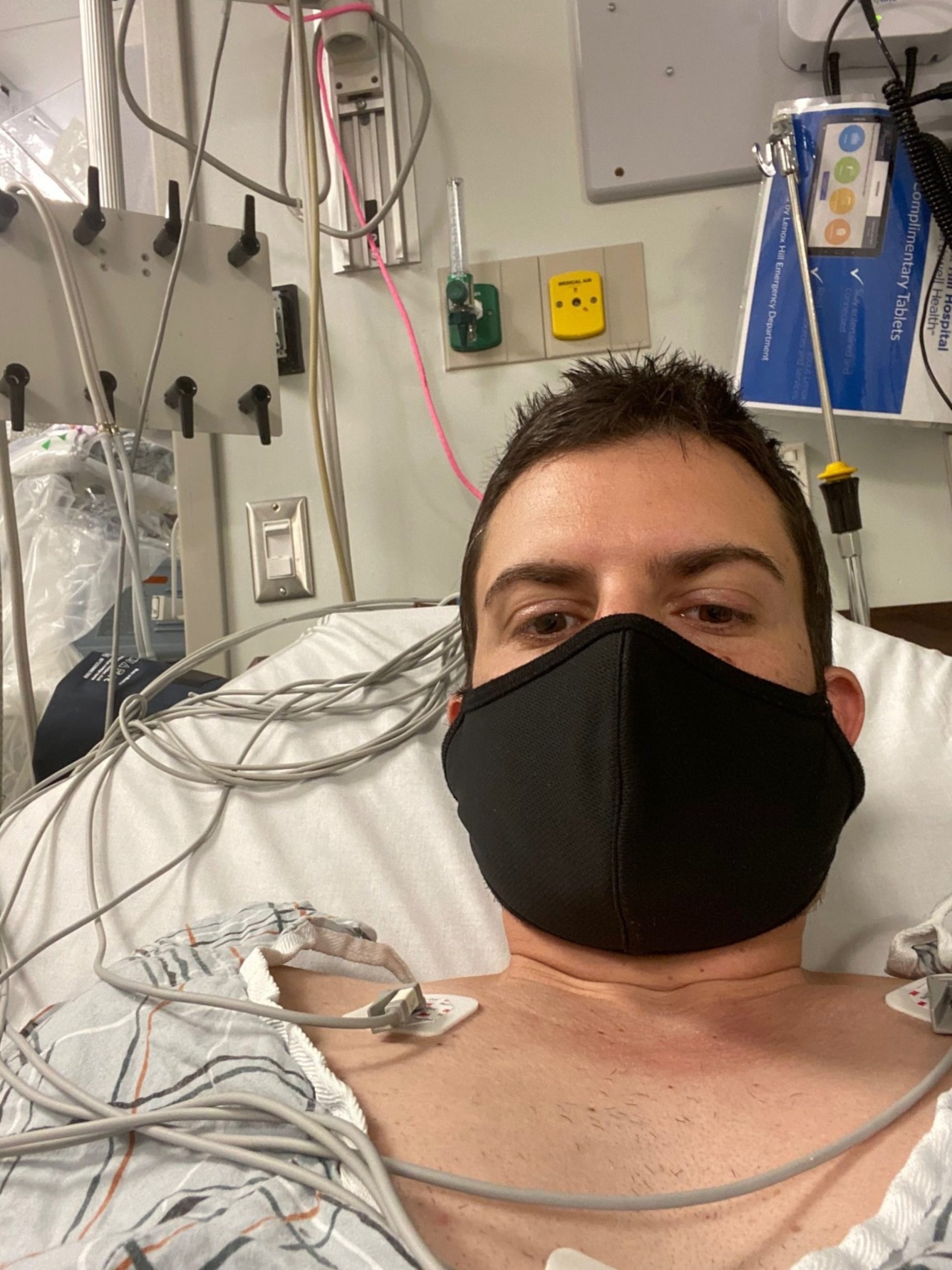“Killer fungus” may sound like science fiction, but fungal infections kill an estimated 1.7 million people worldwide per year — more than tuberculosis or malaria.
Now, driven by climate change, population growth, and drug resistance, the danger is growing, reinforced by new warnings from the World Health Organization and Centers for Disease Control and Prevention.
Fungal infections can include a diverse range of illnesses, from athletes’ foot to more dangerous tissue infections.
There’s blastomycosis and cryptococcus, which are in the air we breath. There’s Candida auris — a yeast — which stalks sick people in hospitals.
Fungi that infect the lungs can take weeks to diagnose because they often mimic bacterial or viral respiratory illnesses.
Allison Karsh, a mom of two in Arizona, spent weeks trying to get a diagnosis for an ever-growing constellation of symptoms. Finally, she was diagnosed with the illness Valley fever, caused by a fungus called coccidioides that lives in the dirt in the dry deserts of the American Southwest
But even after her diagnosis, Karsh experienced fatigue so severe that she was spending 18 hours a day in bed. It took months for her to recover.
Her doctor, Dr. John Galgiani at the University of Arizona, estimates that up to one-third of what look like pneumonia cases in the area could actually be Valley fever.
Unlike bacterial and viral infections, scientists don’t have any anti-fungal vaccines. There are treatments and tests, but those are limited. In late 2022, the WHO released the first “fungal priority pathogens” list — a major step in prioritizing long-neglected diseases and urging scientists to research treatments.
“We need to consider fungi in any type of milieu when we’re talking about infectious diseases. They are there, they are here to stay. They are smart, they are hard to treat,” said Dr. Tom Chiller, chief of the Mycotic Diseases Branch at the CDC.

The director of the National Reference Centre for Invasive Fungus Infections, Oliver Kurzai, holding in his hands a petri dish holding the yeast candida auris in a laboratory of Wuerzburg University in Wuerzburg, Germany, January 23, 2018.
Nicolas Armer/Picture Alliance via Getty Images, FILE
Chiller says twin crises are converging to make fungal infections worse. First, humans are living longer, but sicker — with a higher prevalence of things like obesity, diabetes and inflammatory diseases — which make us more vulnerable and better hosts for the fungi to thrive.
Second: the planet is warming. If fungi continue to evolve in an increasingly warming world, they could become even more adept at thriving in our 98.6 degree bodies, according to the CDC.
But scientists say there is hope for a Valley fever vaccine. Dogs, too, can get sick and die of Valley fever.
And one of the vaccine’s most famous backers is former NFL tight end Rob Gronkowski. He’s had friends get sick from it, including a former University of Arizona teammate Sterling Lewis, who died of Valley fever at 32.
Gronkowski is also a dog lover. He adores his French bulldog Ralphie. A friend connected Gronkowski to Dylan Balsz, founder and CEO of Anivive Sciences, which is hoping to bring the vaccine to market.
Researchers say this vaccine, even though it’s only meant for dogs, would be groundbreaking. It’s awaiting approval from the USDA.
“It’ll be the first pan-fungal vaccine for any species, human, pets and … this would open the door to creating vaccines for any number of potential fungi infections,” Balsz said.
A human vaccine could take almost a decade to come to market — much longer than it would take for a canine-friendly vaccine. But Galgiani, who has been working on this vaccine for years, is hopeful.
“I’m an optimist. I think if money was not an object, we could have this under consideration at the FDA within eight years. And we’re working on that very hard. But how fast we get this depends really on how much people want this,” Galgiani said.
Most scientists agree that our greatest infectious threat is from another virus — like COVID 19 — capable of causing a global pandemic. But even if fungi aren’t the highest priority pathogen right now, the WHO and CDC warn there’s a real risk that fungi will take us by surprise, and there’s new urgency to develop tests, treatments and vaccines to combat an increasingly urgent threat.
ABC Audio’s flagship daily podcast “Start Here,” in partnership with ABC News’ Medical Unit, will air a special edition of its daily podcast reporting on the escalating dangers posed by fungal infections, Friday, March 15.
Fungal infections have become a growing concern in recent years due to various factors such as climate change, antibiotic resistance, and increased global travel. These infections, caused by fungi that can be found in the environment, can range from mild skin infections to life-threatening systemic infections.
One of the main reasons for the increasing risk of fungal infections is the rise in antibiotic resistance. Antibiotics are commonly used to treat bacterial infections, but they can also disrupt the balance of microorganisms in the body, making it easier for fungi to thrive. This is particularly concerning in healthcare settings, where patients are often prescribed broad-spectrum antibiotics that can kill off beneficial bacteria and allow fungi to take hold.
Climate change is another factor that has contributed to the spread of fungal infections. Warmer temperatures and increased humidity create ideal conditions for fungi to grow and spread. This has led to an increase in cases of fungal skin infections such as athlete’s foot and ringworm, as well as more serious infections like histoplasmosis and coccidioidomycosis, which are caused by inhaling fungal spores.
Global travel has also played a role in the rise of fungal infections, as people can unknowingly bring fungi from one region to another. This has led to the emergence of new fungal strains and the spread of drug-resistant fungi around the world. In addition, the use of contaminated medical devices and healthcare products has been linked to outbreaks of fungal infections in hospitals and other healthcare settings.
Preventing fungal infections requires a multi-faceted approach that includes proper hygiene practices, avoiding contact with contaminated surfaces, and using antifungal medications when necessary. It is also important for healthcare providers to be vigilant in identifying and treating fungal infections, especially in patients with weakened immune systems or underlying health conditions.
Overall, the increasing risk of fungal infections highlights the need for greater awareness and research into these often overlooked pathogens. By understanding the factors that contribute to their spread and taking steps to prevent them, we can better protect ourselves and our communities from the threat of fungal infections.



